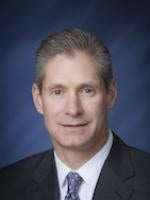On March 24, 2014, the U.S. Department of Energy’s National Renewable Energy Laboratory (NREL) released its “California-Wyoming Grid Integration Study, Phase 1 – Economic Analysis” which examines the economics of new transmission infrastructure designed to deliver Wyoming wind power to California consumers. The study considers a range of scenarios and possible federal tax incentives to assess the economic viability of a new transmission corridor that would make Wyoming wind power available to help meet California’s renewable portfolio standard (RPS) requirement of 33% of retail sales from renewable resources by 2020.

Building on previous system-wide studies by the Western Electricity Coordinating Council and others which focused on regional opportunities to meet California’s 2020 RPS goal, the NREL study homes in on a specific Wyoming-to-California transmission corridor and applies various assumptions and inputs to assess the economic benefits of developing such a transmission corridor. To assess the economics of the new transmission infrastructure, NREL’s study used information from the proposed TransWest Express (TWE) Project – a 725 mile, 600 kV, 3,000 MW high voltage direct current transmission line extending from southern Wyoming to a substation south of Las Vegas, Nevada which would ultimately interconnect with the California Independent System Operator (CAISO) for delivery into California markets. The TWE Project is being developed by TransWest Express LLC with participation by the Western Area Power Administration.
The NREL study evaluated four renewable resource portfolios developed as part of the California Public Utilities Commission’s Long Term Procurement Plan which included various combinations of California-only and California-Wyoming combined resources. The study then factored in considerations related to technology costs, tax incentives, transmission and generation costs, comparative capacity values, and production costs. NREL concluded that the benefits of a Wyoming-to-California transmission corridor exceeded the costs by a range of ratios from 1.62 to 3.62 across all scenarios, assumptions, and sensitivities that were studied. In terms of actual dollars, the economic analysis concluded that annual savings in generator costs – the largest component in the cost-benefit analyses – ranged from $500 million to approximately $1 billion depending on assumptions related to tax incentives and generation costs. While the NREL study stopped short of any conclusion as to whether these results justify such a transmission project, the study did note that FERC Order 1000 restricts utilities from using a cost-benefit ratio of greater than 1.25 when determining whether a particular project has sufficient benefits for inclusion in a regional transmission plan. Given that NREL’s cost-benefit analyses are based on data from the TWE Project, this suggests that project would compare favorably under FERC 1000 criteria.
In a statement released by the Wyoming Infrastructure Authority (WIA) which sponsored the NREL economic analysis, WIA Executive Director Loyd Drain stated, “This study quantifies the benefit of connecting the best wind in the West to the state with the largest demand for renewables in the West, thus the California-Wyoming connection.” While additional studies are needed to assess the economics of requirements including interconnection with CAISO and integration of Wyoming wind with California-located renewable resources, NREL’s latest study appears to continue to support the vision for the TWE Project. The Draft Environmental Impact Statement (EIS) for the TWE Project was issued in July, 2013 and the Final EIS is expected later this year. Together with six other regional transmission projects, the TWE Project was selected for accelerated, prioritized treatment by the federal government’s Rapid Response Team for Transmission (RRTT).
Of the seven RRTT projects, only the TWE Project is specifically intended to deliver Wyoming wind power to California consumers.




 />i
/>i

